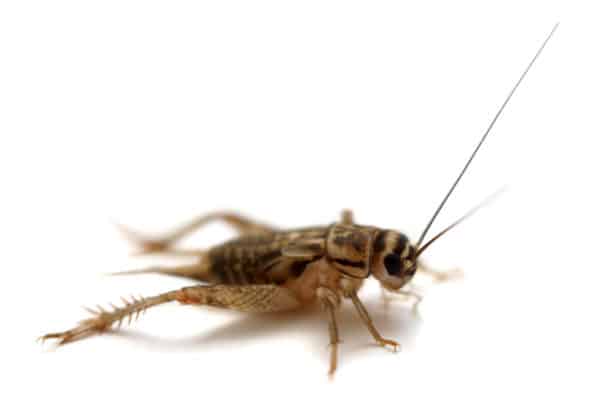House Cricket

Thanks to their tendency to be extremely noisy, you’ll probably hear a house cricket before you see them. They’re typically brown in color and about 1/2 to 1 inch in length. House crickets are able to jump as high as a grasshopper and can make their way into your home through weep screeds or via your sliding glass doors. House crickets love to feed on plants, other insects (dead or alive), and fabric, which can devastate your upholstered furniture and/or clothing collections, leaving behind large holes and tiny, crumb-sized black droppings.
House crickets like to dwell outside during the warm season and are particularly fond of garbage dumps. They are often drawn to electric lights in great numbers, sometimes thousands, and rest on vertical surfaces such as light poles and house walls. When the weather becomes cold, they will flee inside to buildings and sheds for the moisture and warmth they provide.
The presence of crickets in the home is the most visible indicator of a house cricket infestation. They are attracted to warm, moist places within structures. Another sign of a cricket infestation is the chirping noise male house crickets make when they rub their front wings together. This "calling song" is used to attract females and is commonly heard at night since they are nocturnal. This chirping might indicate a house cricket infestation if homeowners listen to it. A house cricket infestation is also detected by chewed fabric. With magnification, mandible markings along chewed edges are often evident. These markings are significantly less than 1 mm in width.
Outside, house crickets eat plants and insects, both dead and alive, including other crickets. They can devour fabric indoors, including clothes and carpets. Wool, cotton, silk, synthetic textiles, and perspiration-soiled clothing are particularly appealing to house crickets.
While house crickets pose no health danger to people, they may cause property damage, mainly to clothes, carpets, and fabric-covered spaces. Wool, cotton, silk, and synthetics are popular materials. Because house crickets typically feed on the surface, the region is roughened by pulling the fibers free while feeding. Large sections of cloth may be eaten out in the event of a significant infestation. This is why it is important to eliminate crickets as soon as possible.


